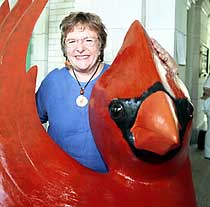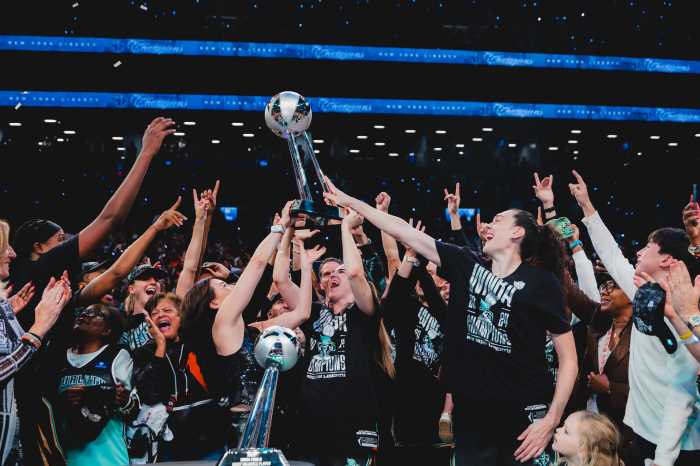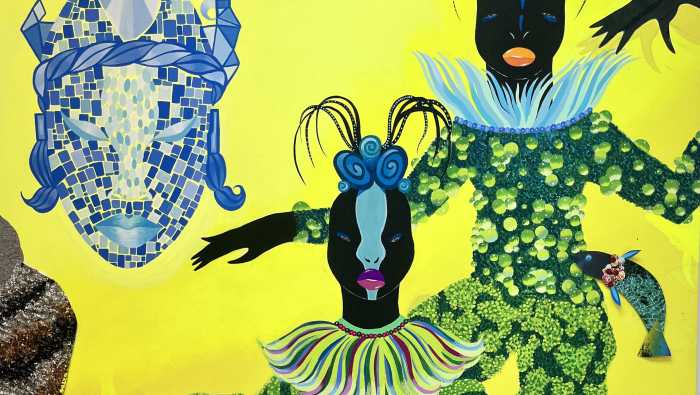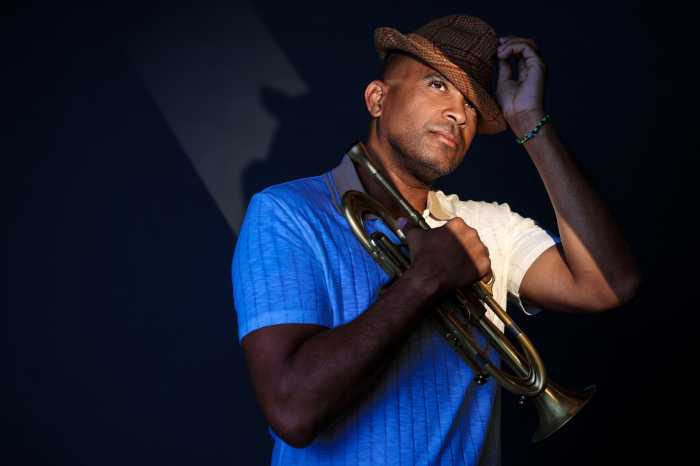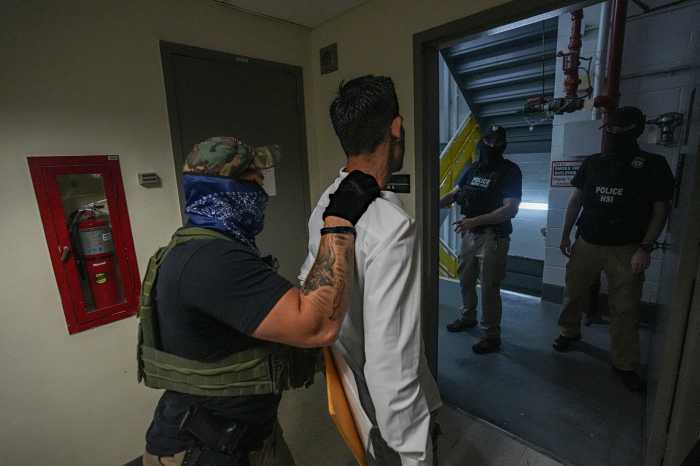Prospect Park’s new Audubon Center at the Boathouse has a staff
that hopes to make urban dwellers look at the park – and its
inhabitants – in a totally new way.
The center will officially be opened to the public on Friday,
April 26, the birthdays of John James Audubon and Prospect Park
landscape architect Frederick Law Olmsted.
GO Brooklyn received an advance peek at the newly renovated facility
– the first, urban-based Audubon center – on Friday.
Inside the 97-year-old Beaux-Arts landmark, colorful, human-sized
sculptures of animals, created by May & Watkins Design of
DUMBO, literally offer children and adults alike a bird’s-eye
view of the park. A video inside the red cardinal approximates
its speed and low flight path through Prospect Park, swooping
and skimming over leaves.
Crouching to look through a chipmunk’s eyes, a visitor will discover
that those animals apparently can’t see the color red.
This theme of putting yourself in the place of wildlife is continued
in a human-sized oriole’s nest. Step inside the nest, sit on
the eggs and watch a split-screen video that compares animal
behaviors, like grooming, with human behavior. Don’t forget to
look up to see an illustration of a bird leaning in to feed you
a worm.
These clever, interactive exhibits, and the full-time, part-time
and volunteer staff of the new center are under the direction
of Ditmas Park resident Cheryl Bartholow, who said she’s "trying
to use every inch of the 5,000 square feet for programming."
This means that even a cafe table (concessions and gifts will
be sold at the center) has park specimens under glass. As you
walk into the center, the doorways have motion detectors; each
setting off a different bird song that can be heard in the park.
Suddenly it seems that the park isn’t just a place to go for
a jog, or to have a picnic, ice skate or ride the carousel. This
man-made park – and Brooklyn’s only freshwater lake – is also
a refuge for animals. After a visit to the center, one might
recognize birds’ shapes or calls and have a new appreciation
for Prospect Park’s residents.
The Park’s varied habitat makes it an important stopover point
for migratory birds, and as a result, it has been designated
an "important bird area" by Audubon New York, according
to Chuck Remington, director of education for the organization.
More than 200 species of birds were spotted in Prospect Park
last year, including 61 rare migratory and resident species.
Visitors can also explore other interactive exhibits, go to Web
sites and use the ID software on the six new computers, reference
the field guides, analyze pond water under a video microscope,
participate in "Citizen Science" activities (recording
their observations for scientists), use a spotting scope on the
balcony, take morning tours on weekends throughout the year and
enjoy an electric boat tour of the Lullwater.
Bartholow explained that the boathouse is "positioned on
low water which is the best nesting areas for birds," and
the quiet, captained electric boats won’t disturb the birds as
they allow visitors to get up close.
There will also be a visitor’s information desk inside the boathouse.
The center’s volunteers have each undergone 30 hours of training.
The estimated cost of the boathouse restoration was $4.5 million,
and the building – as well as the exhibits – are handicapped
accessible.
The 21-acre woodland around the boathouse is also being restored
and nature trails will be built to explore the Park’s water system,
wetlands and bird-watching spots.
On Friday, a cofferdam was rigged up and a brand new dock was
in the process of being built.
"Through this new center we hope to build in the people
who use the park a sense of stewardship," said Prospect
Park Administrator Tupper Thomas. "We want people to learn
how important Prospect Park is for birds, nature and education
so that they will want to care for the Park, support it and protect
it."
For information about hours and programs, visit www.prospectparkaudubon.org
or call (718) 287-3400.


